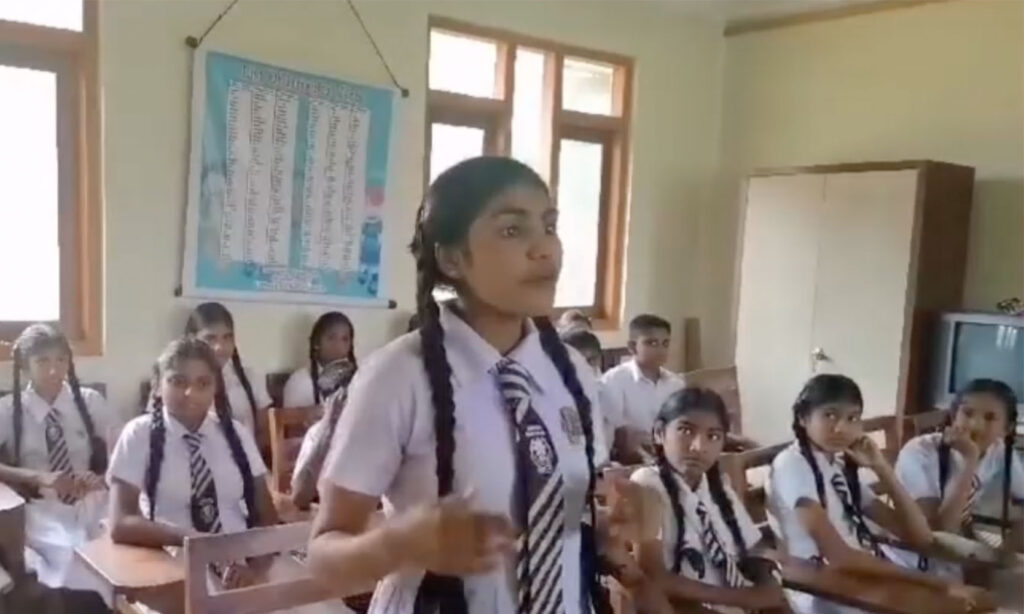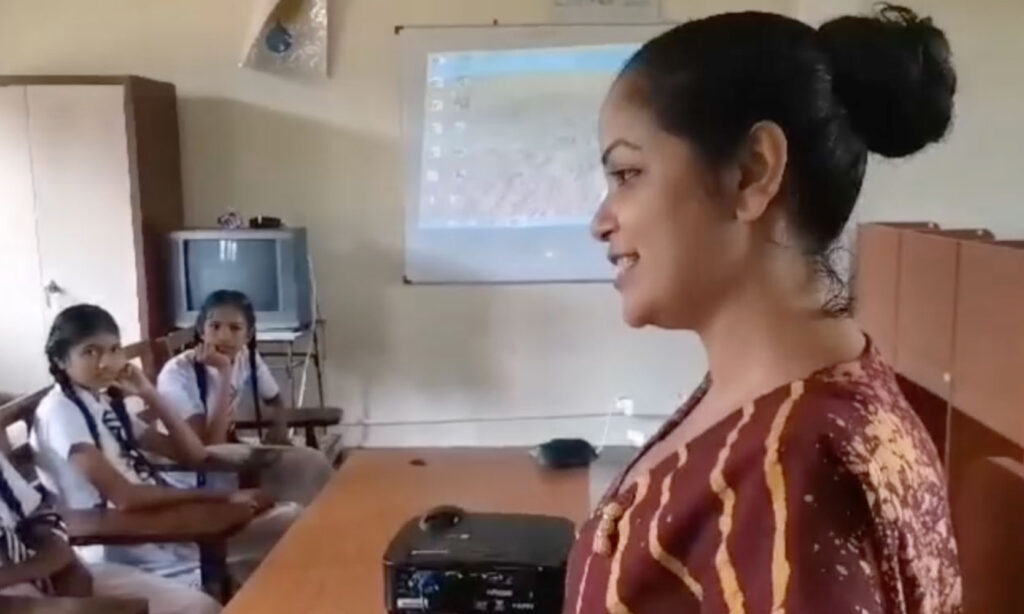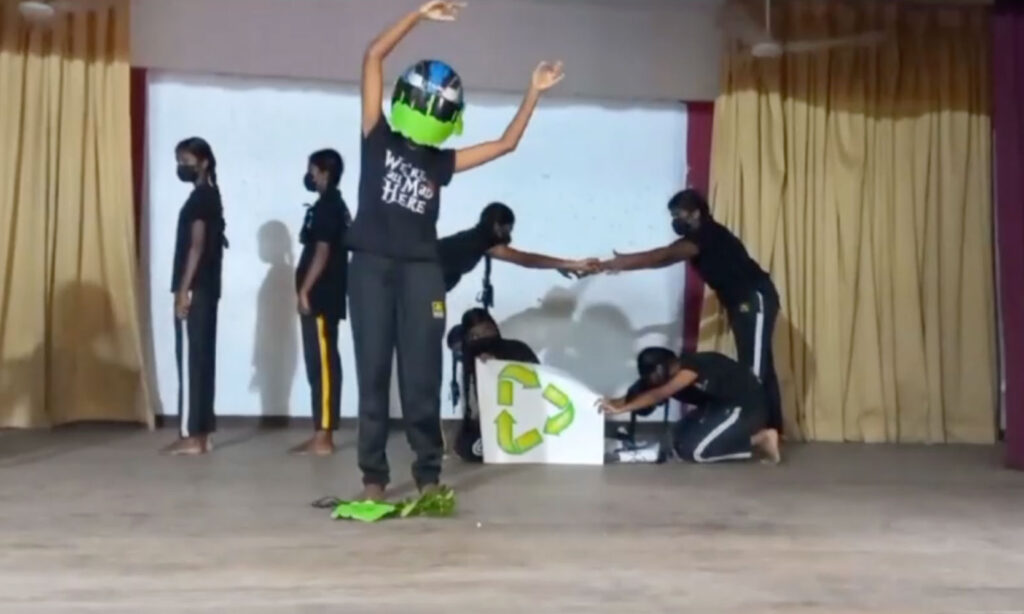



“After screening the film “Kayayo,” we discussed the remedial measures to overcome poverty in our area. We conducted a special program for women in the school community about small business ideas such as resin arts, making potted plants, candles, eco-friendly pencils, and pens, etc. We also held a poster competition about overall sustainable development goals..”
— Udeshika Indeewari De Silva Kudachchi
Udeshika Indeewari De Silva Kudachchi is an Educator at the G/ Amugoda Maha Vidyalaya school based in Elpitiya, Galle, Southern Province in Sri Lanka. For the SIMA SDG Challenge, Udeshika chose to screen many films including, Kayayo and A Plastic Ocean. Kayayo takes place In the capital of Ghana, where 10,000 girls from the ages of 6 work as real life shopping baskets – called Kayayo. This documentary is about Bamunu, an 8-year–old girl who hasn’t seen her family since she was sent away from home two years ago to work as a Kayayo to support her family.
A Plastic Ocean begins when journalist Craig Leeson, searching for the elusive blue whale, discovers plastic waste in what should be a pristine ocean. In this adventure documentary, Craig teams up with free diver Tanya Streeter and an international team of scientists and researchers. They travel to twenty locations around the world over the next four years to explore the fragile state of our oceans, uncover alarming truths about plastic pollution, and reveal working solutions that can be put into immediate effect.
Through the films, Udeshika encouraged the students to connect with several SDGs, including Sustainable Development Goal (SDG) Number 1: No Poverty and Sustainable Development Goal (SDG) Number 13: Climate Action. Udeshika Indeewari De Silva Kudachchi was the 2023 SDG Challenge winner.
How would you describe the learning experience for your students?
They had a great time learning about the Sustainable Development Goals. The SIMA platform helped facilitate our teaching process, as I could access many films related to various SDGs and screen them for my students. My students prefer to learn by watching educational documentaries rather than using the traditional chalk and talk method. In the future, I also look forward to using SIMA films in my teaching process.
Name of the SDG(s) you discussed in the classroom:
All SDGs
Please tell us what you learned in the process of implementing this lesson with your classroom?
When doing these lessons with my students, I learned a few things. For example, some students needed help understanding the hidden concepts of some films. The enthusiasm shown by some students was really admirable. The most important thing was that students loved to engage in the campaign, collecting used pens, visiting some nearby schools, practicing dramas, etc. There were challenges also, as our school system is mostly exam-oriented.
Please tell us about your Impact Report:
My students seemed to really enjoy the films. The film ‘A Plastic Ocean’, was effective in raising the awareness of the pervasive use of plastic and its detrimental impact on the environment. After screening the film I encouraged students to share what they have learned from the film and about their practical solutions to minimize this huge problem. Students came up with the concept of 3R. (Reduce, Reuse and Recycle). The environmental society of our school is already doing a program to collect used pens from our school children and we hand them over to a well-known stationery manufacturing company in Sri Lanka. There, they recycle those pens. One of our students suggested extending that project to other schools in our area. Now we are in the initial process of that project. We have already informed 7 schools through our principal.
After watching the film, some of our students organized a silent drama to emphasize the damage caused by this plastic polythene to the environment. We staged this drama for our school students and their parents. At the end, we organized an awareness program to encourage them to use eco-friendly products such as cloth bags, reed bags, etc. We also launched a tree-planting project in our school with the help of students, teachers, and parents.
Following the screening of the film “Kayayo,” we discussed remedial measures to overcome poverty in our area. We conducted a special program for women in the school community about small business ideas, such as resin arts, making potted plants, candles, eco-friendly pencils and pens, etc. We also held a poster competition about overall sustainable development goals.
Their campaign ‘Pens for a Greener Future’, was extended to nearby schools with the support of the principal and the environmental society of the school. Their aim was to minimize the plastic pollution by adopting one step of the 3R method- Recycling. The objectives of their campaign were to collect used plastic pens from schools, raise awareness about the environmental impact of disposable plastic pens, and reduce plastic waste by recycling plastic pens. Students collected nearly 10000 used pens within a month. Through the powerpoint presentations, social media and SIMA films, the campaign effectively raised awareness about the harmful impact of disposable plastic pens on the environment. Over 1000 students and school community members attended awareness events. Though were a lot of challenges when continuing the campaign, our future aim is to expand this campaign all over the country.